7 Simple Steps To Use Presenter View in PowerPoint With a Projector
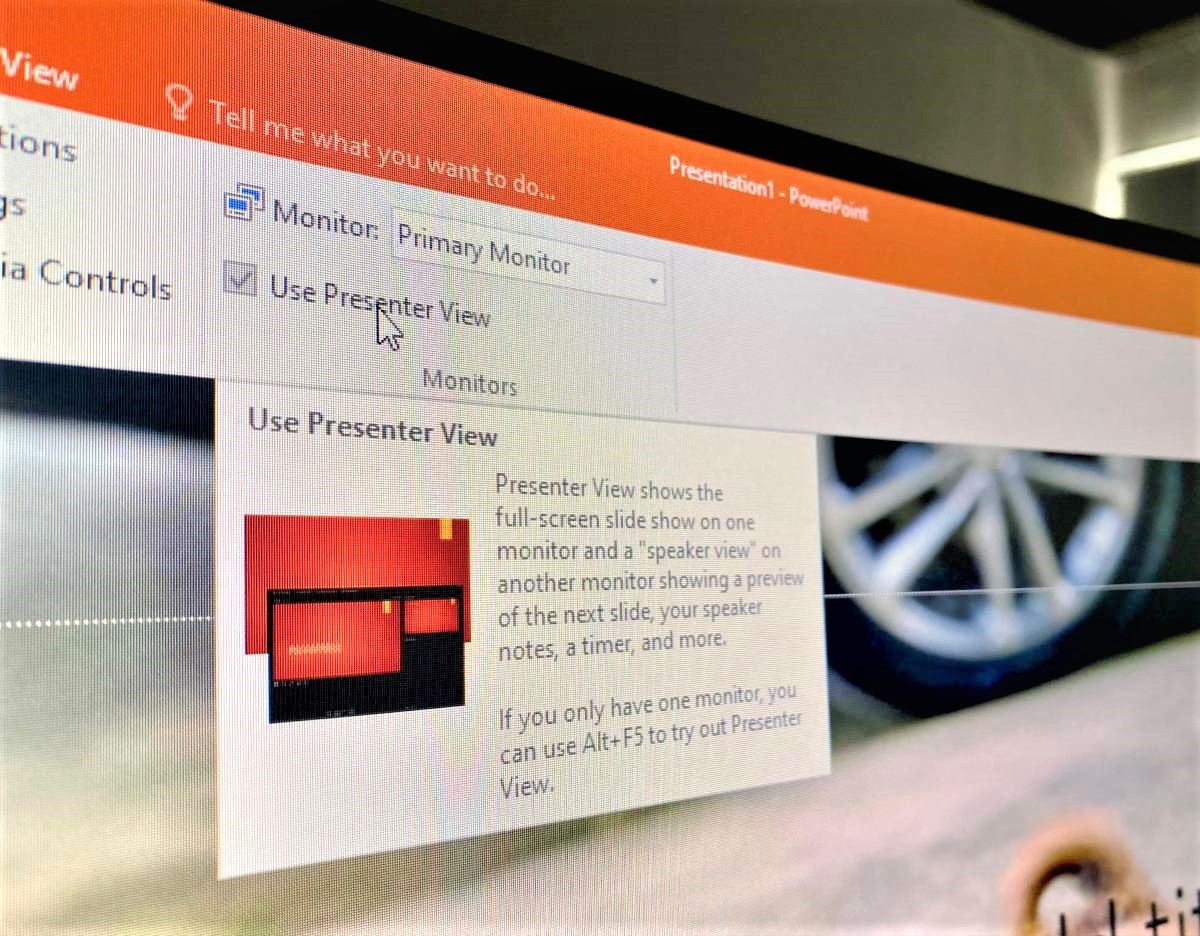
What to Know
- Presenter View allows your laptop and external monitor to display different views for the presenter and audience.
- Requirements: A laptop with multi-monitor function; a projector; video cables.
- Process: Connect your laptop to the projector with a video cable > Set the projector to the correct input source > Set the multiple display settings to Extend > Enable the Presenter View on PowerPoint > Set your laptop as the primary monitor.
In this guide, I will share with you detailed step-by-step instructions to help you use the Presenter View feature in PowerPoint with your projector.
Let’s dive in!
Quick Navigation
What Is the Presenter View?
The Presenter View was introduced in PowerPoint 2010 as a functional extension that gives you a private view on your laptop or computer during PowerPoint presentations while the audience sees the presentation on a screen.
The Presenter View is suitable for multiple display setups and it comes with basic tools to make your presentation easier. Some of these tools include:
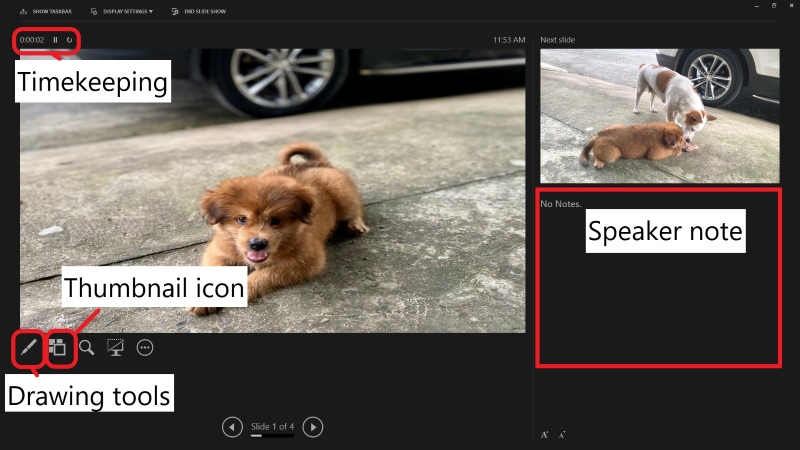
- Speaker notes for you to put down key points and other ideas for your presentation while the audience sees the slides only.
- A Timekeeping tool to help you keep track of your time and avoid overrunning of time during the presentation.
- Drawing tools such as the annotation pen, laser pointer, or highlighter tool to draw attention to specific places in your slides and for better elucidation.
- A Thumbnail icon to see slides and jump through slides easily during the presentation.
Requirements
Below are a few things you’ll need to use the Presenter View on PowerPoint.
1. A PC That Supports Multiple Monitors
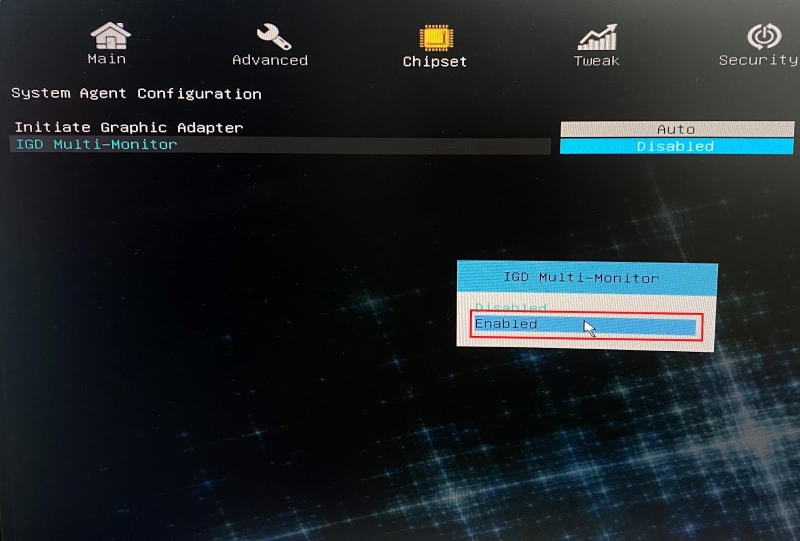
Almost every Windows laptop supports (at least) dual monitors. You can check the specifications of your graphics card on the manufacturer’s website to confirm. If the Multi Monitor section is marked “Yes,” you’re good to go.
If your laptop supports multiple monitors but cannot detect your projector after connecting them, it means you have to update or reinstall your graphics driver.
2. Video Ports on PC and Projector
You’ll need a wired connection like HDMI or VGA to transmit (or mirror) the video data on your laptop’s screen to the projector.
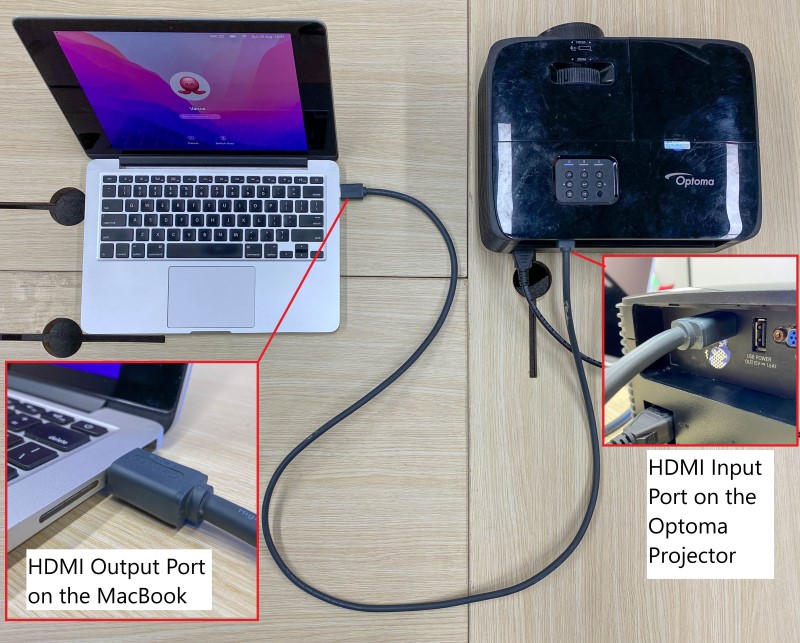
Your PC must have HDMI, DVI, DisplayPort, or VGA ports. Check for the video ports on the back and sides of the laptop.
To make the connection easier, your projector should also have matching video ports. However, if the video ports on your projector and PC don’t match, you’ll need to buy an adapter (i.e., DisplayPort to HDMI).
3. Video Cables
Depending on your interface of choice, you’ll need to buy HDMI, VGA, or DisplayPort cables.
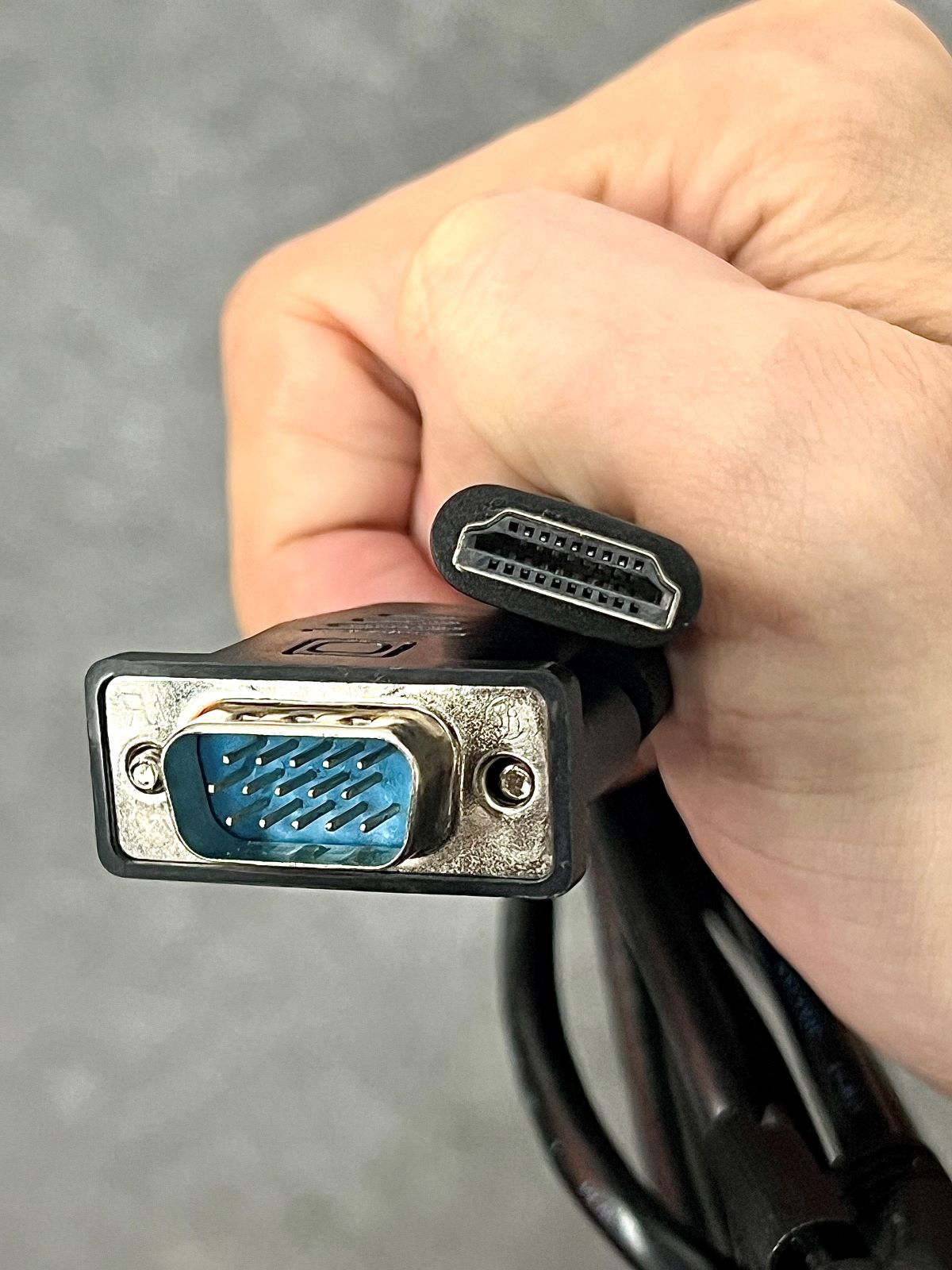
How To Use the Presenter View in PowerPoint?
To set up the Presenter View, you should have your second screen available, like your monitor or a projector or you will not see the Presenter View even if it is enabled.
If you are making a presentation in a large setting, then it will be suitable to use a projector to project your slides.
To hook up your computer/laptop to your projector and utilize the Presenter View function, simply follow these instructions:
Step 1: Turn on your computer/laptop and projector.
Step 2: Connect the VGA cable to the VGA ports between your computer/laptop and the projector. If your computer/laptop and projector have HDMI ports, then connect your computer/laptop to your projector using an HDMI cable.
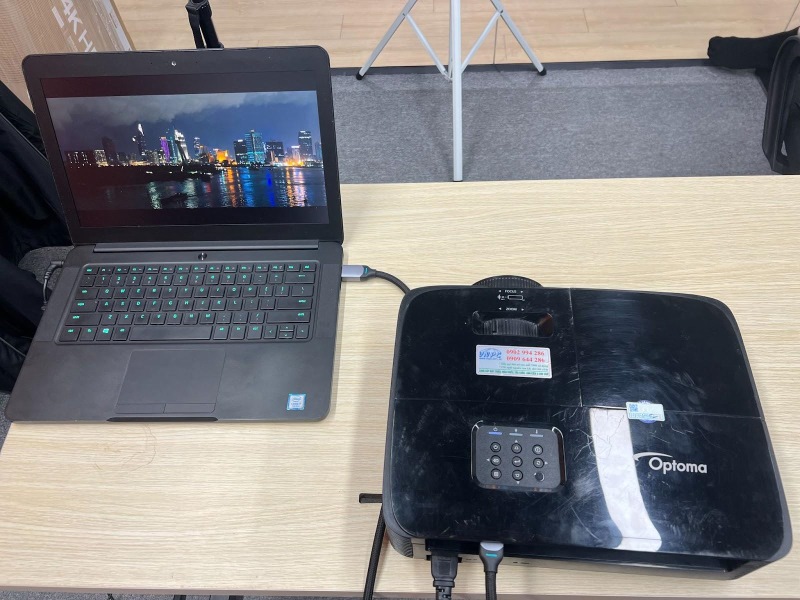
Using a VGA cable will only transport pictures and not sound; unlike the HDMI that transports pictures and sounds, so you will have to connect your projector speaker to your computer/laptop headphone jack using an aux cord.
External speakers or a high-quality audio system can be used in place of the projector speaker or in situations where the projector does not have an internal speaker.
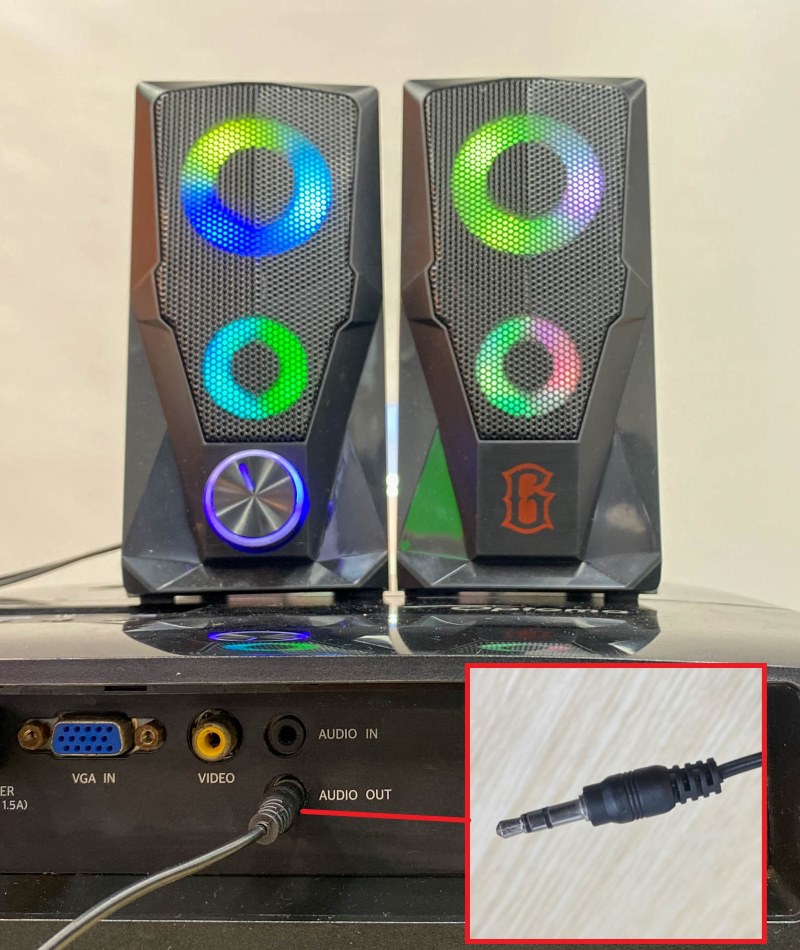
Step 4: Press the Windows + P buttons on the keyboard to open the PROJECT settings, and then select Extend your display in order to have an additional view.
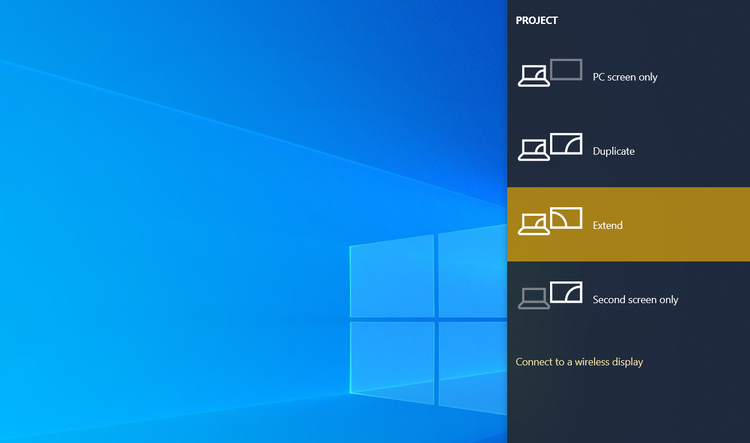
NOTE: If the Windows PROJECT Settings don’t open, do the following on your PC:
Windows 10: Click on Start > Settings > System > Display > Multiple Display > Extend these displays.
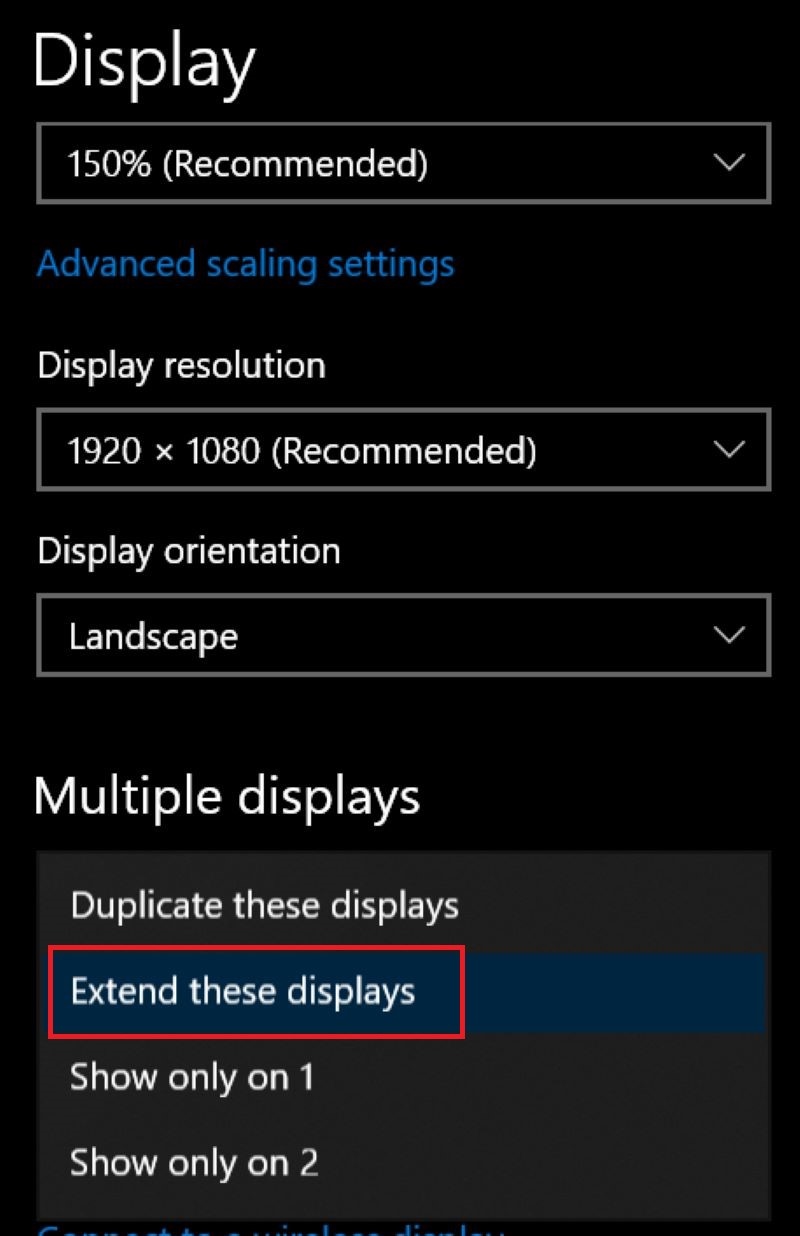
Windows 11: Click on the Windows icon on the taskbar and go to Settings > System > Display > Multiple Displays > Select Extend.
Step 5: On your PowerPoint screen, go to the ribbon tab and click on Slideshow, then click on the Use Presenter View to enable it.
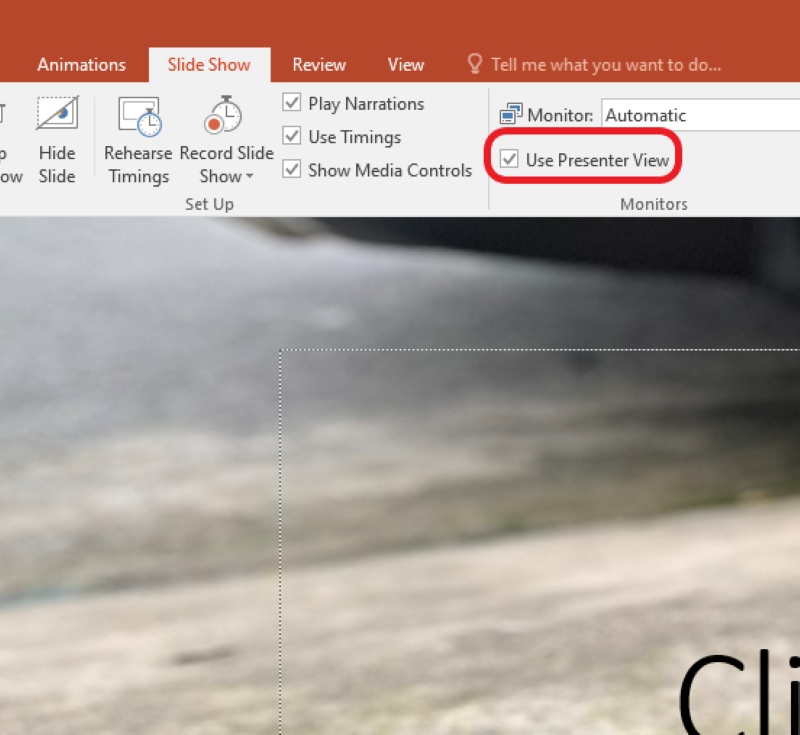
Step 6: Select which monitor to display the Presenter View.
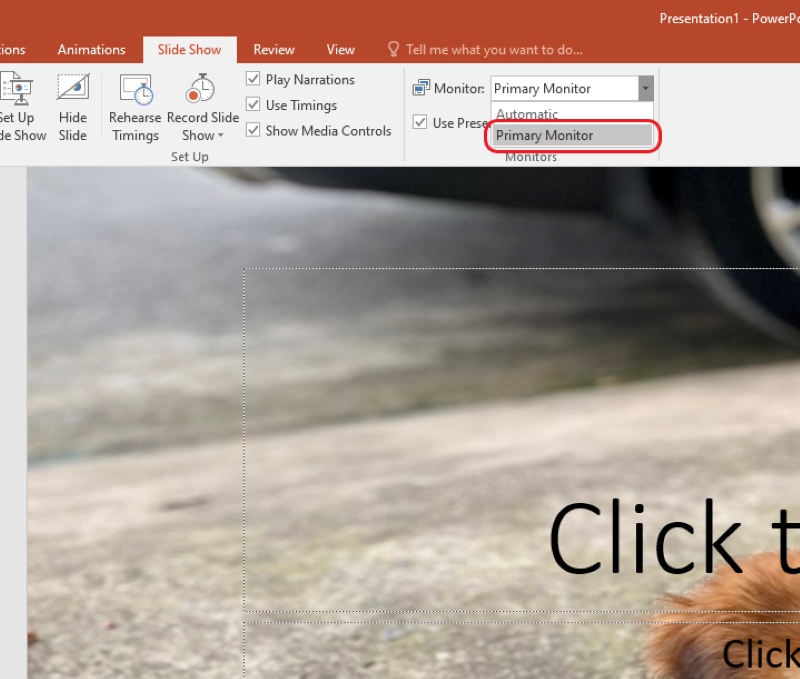
Step 7: To start the Presenter View, press F5 on the keyboard. Now one screen will have the Presenter View while the other screen will have the audience’s view.
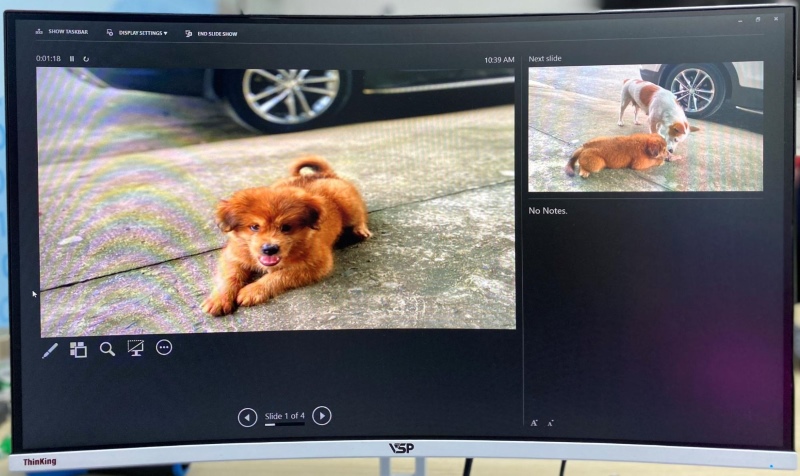
Utilizing the Presenter View
Navigating your way around the Presenter View is easy so you do not have to worry about confusing features.
The top left part of the screen shows the slide you are working on while the top right shows the preview of the next slide in your presentation. The bottom left consists of controls and a next and previous slide arrow and finally, the bottom right contains the speaker’s note.
Some of the features and options in the Presenter View include:
- Show Taskbar allows you to switch to another activity without interrupting your slideshow.
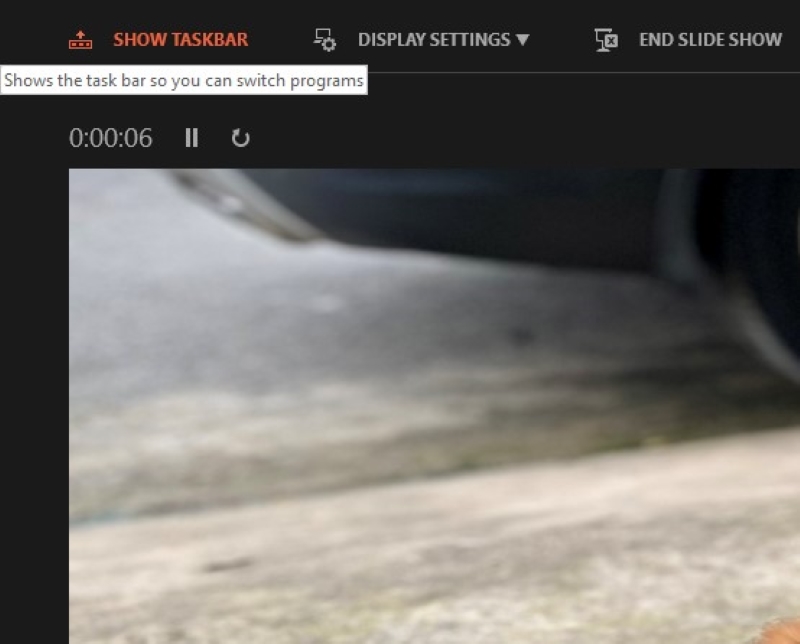
- Display Settings include two options, that is the “Swap Presenter View and SlideShow” and “Duplicate Slide Show”. The Swap Presenter View is to switch the screen that has the presenter view and the slideshow presentation, while the Duplicate SlideShow is to present your slideshow on both screens.
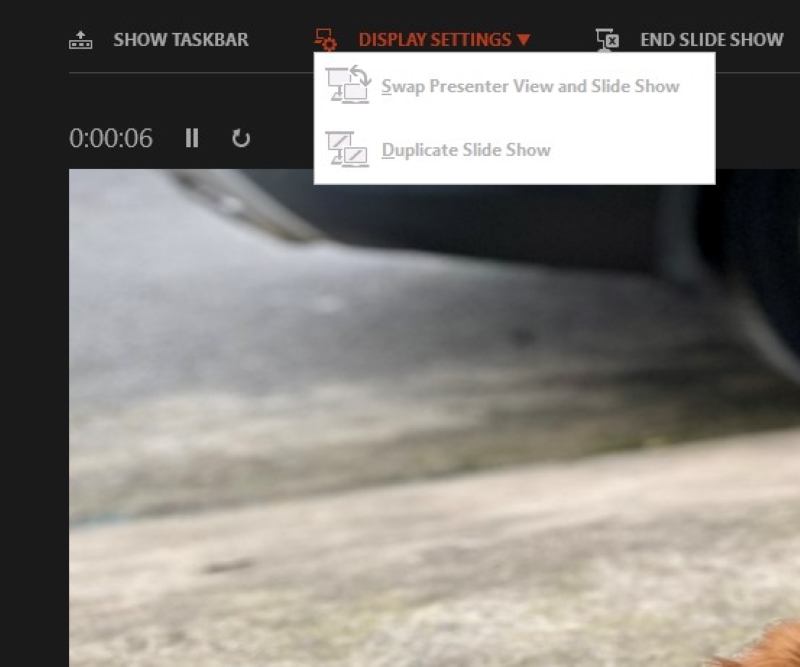
- End Slide Show which is used to end the presentation. You can also use the ESC button on the keyboard to end the slideshow.
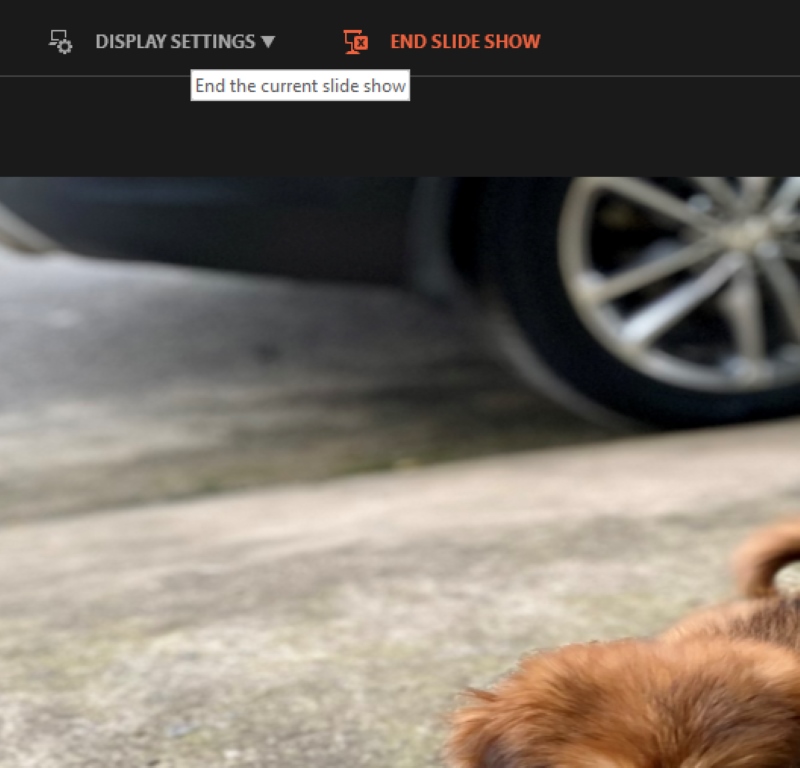
- Speaker Notes are used to write down your key points or ideas and have them in front of you on your screen instead of writing them down on a piece of paper.
- Drawing Tools include the annotation pen to help you draw on the screen, and the laser pointer to point on the screen. The drawing tools are perfect for drawing attention to specific points or areas of concentration and can be erased after usage.
- Timekeeping is on the left, starts timing as soon as the slideshow begins, and shows the amount of time you’ve spent on a slide. You can pause it or readjust it by clicking on the two icons next to it.
- Current Time is located on the right and is used to help you pace your presentation in order to avoid overrunning your time.
- Thumbnail Icon is used to see all the slides in your presentation and to jump to another slide. This is great for switching and jumping through slides easily.

- The Font Icon is used to make the speaker notes larger or smaller.
- The Arrow Icon next to the slide number enables you to go between slides.
- The Magnifying Glass icon is used to zoom in and out on a particular part of your slides.
- Screen Icon that lets you make the screen temporarily black to draw attention to you. You can also use the B key to achieve this black screen and the W key for the white screen.
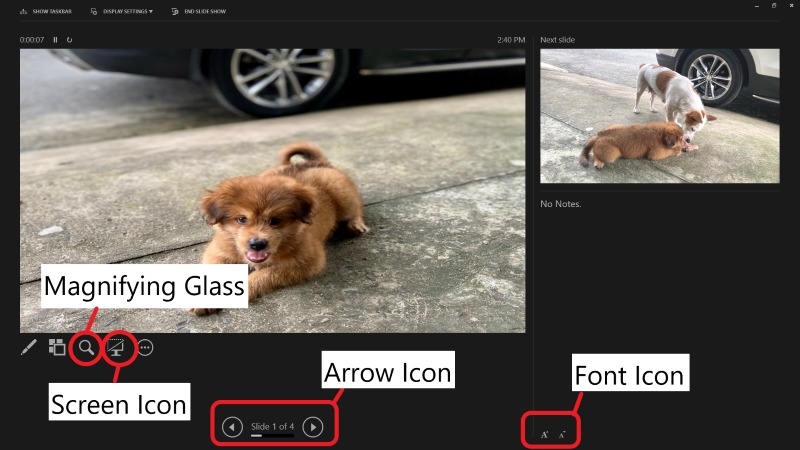
Alternative Solution: Print Slide With Speaker Note
If you have an older computer that doesn’t support multiple monitors, hand-held notes are another way to access your notes during a presentation.
Speakers often shy away from hand-held notes because they might lose their audience while taking glances at their notes. However, the trick to pulling it off is interacting more with your audience than with your notes.
You can print out your slides before the presentation with the notes you added in Presenter View.
Steps to printing slides with speaker notes:
Step 1: Open the presentation in PowerPoint and highlight a slide.
Step 2: Click on File at the top left corner of the screen, and then select Print from the options.
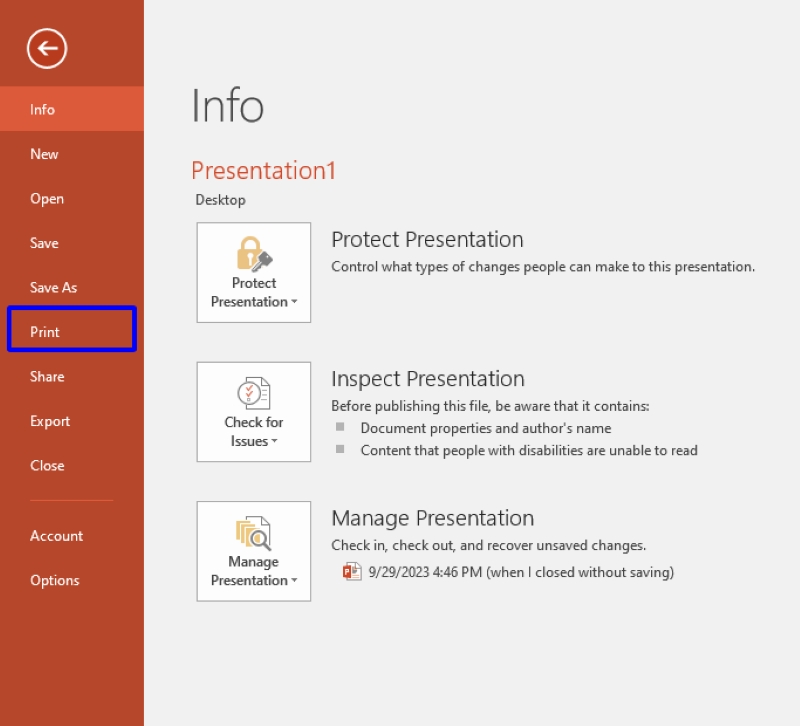
Step 3: In the Settings section, choose Slides, and select Notes Pages as your print layout from the dropdown menu.
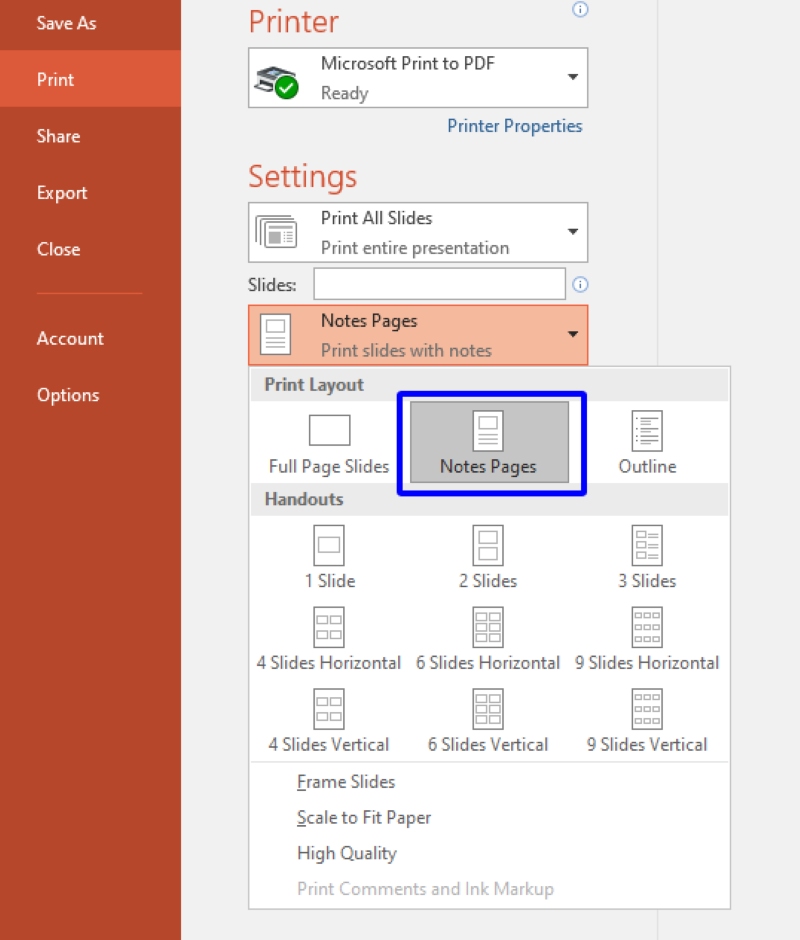
Step 4: Click on the Print icon to print.
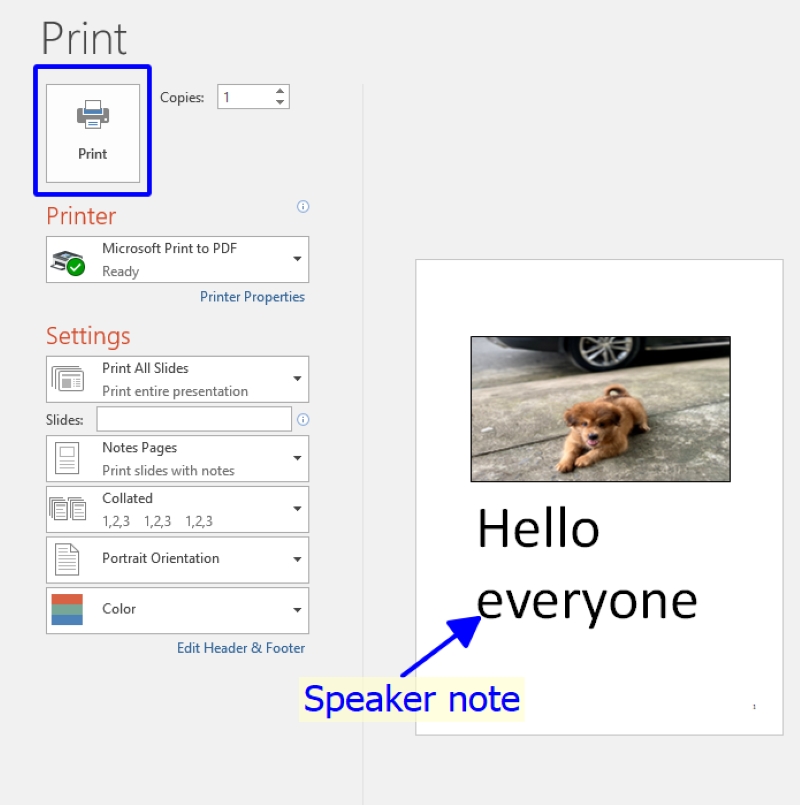
Unfortunately, at this time, there is no option to print multiple slides with notes per page. You’ll have to print any slides where you have notes individually.
NOTE: You can also print your presentation in the “Outline” layout, but the print will only include the slide content and not the slide notes.
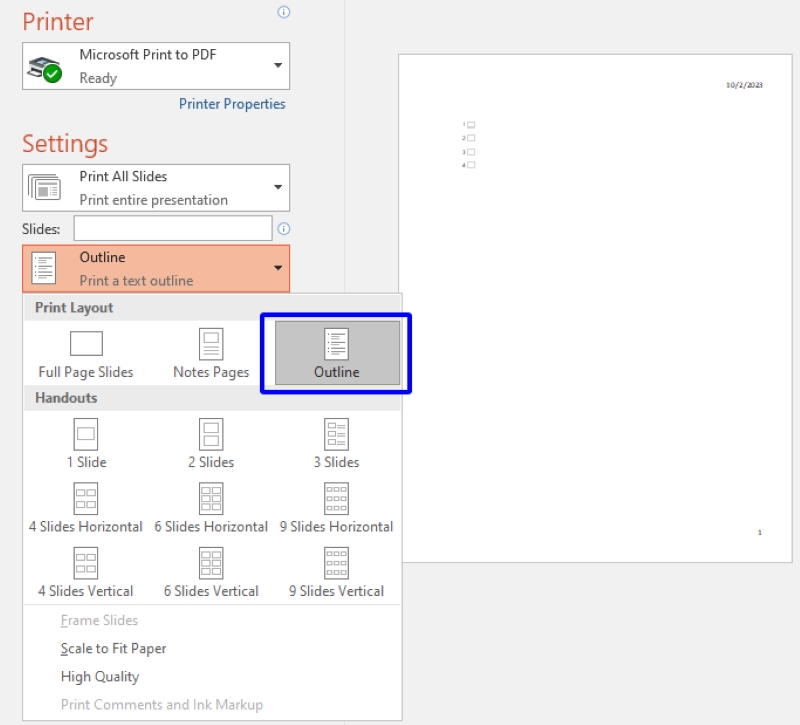
Bonus: Use Presenter View With Just One Monitor
You can also activate Presenter View mode with only one monitor by pressing the shortcut key combo Alt + F5 on your keyboard.
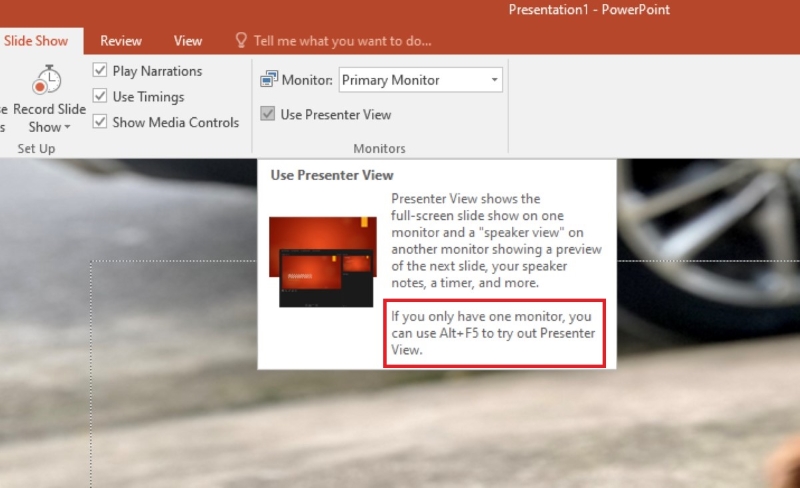
Note: Ensure that you have enabled the Presenter View feature in the Slideshow menu settings of your PowerPoint. Please refer to the previous section.
This is extremely useful for getting accustomed to the Presenter View display or rehearsing your presentation.
Conclusion
The Presenter View on PowerPoint is great for presenters who like to keep their slides simple. You can add all your extra texts to the notes section of each slide so that you don’t skip any important points.
While the notes function is my best part of Presenter View, there are other essential features that you and your audience can benefit from. You’ll only need a PC that supports multiple monitors, a projector, and HDMI (or other suitable) video cables.
Will you try this out? Let us know in the comments when you do.
Gabriella ‘Diogo is a technical writer with a vested interest in tech hardware and equipment. She shares her knowledge and processes in an easy-to-grasp, lighthearted style. When she’s not testing or researching device performance, you’ll find her writing short stories or rewatching episodes of her favorite sitcoms.

